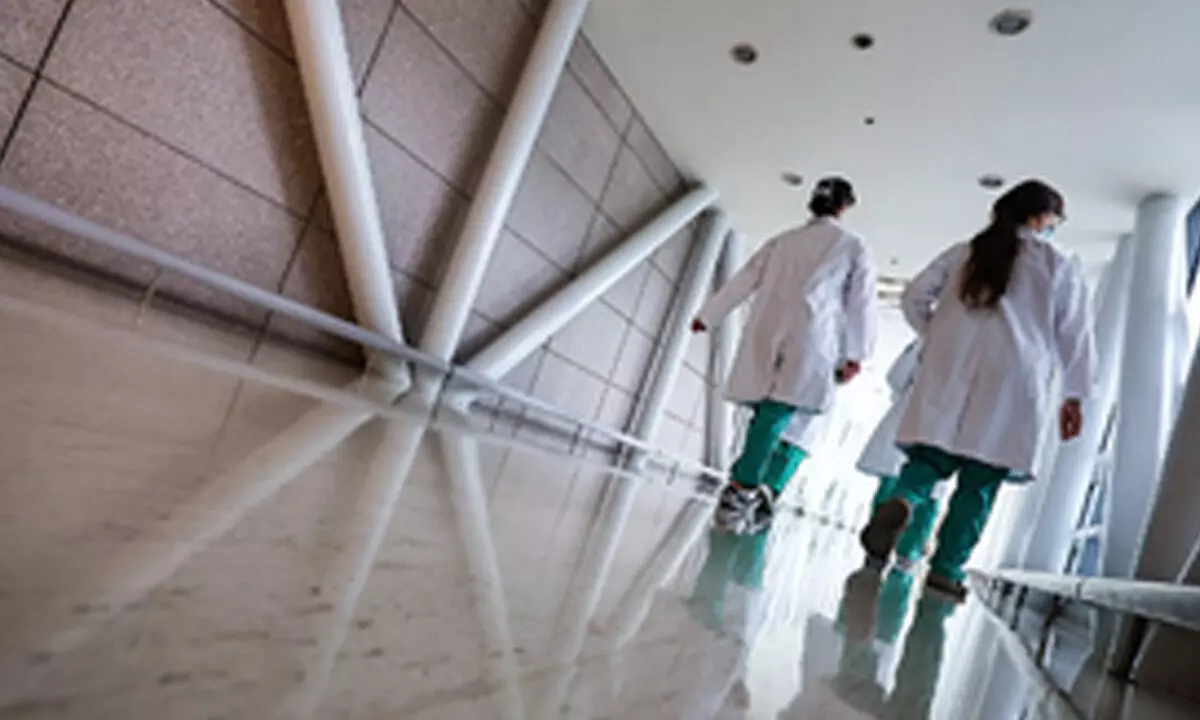Live
- Govt plans to establish offshore Johns Hopkins University Campus in India
- Goa Aces clinch Indian Racing League title
- Study finds how hormone therapy can reshape the skeleton
- High-street fashion players looking at India for manufacturing: Report
- Shreyas Iyer to lead Mumbai as Prithvi Shaw returns for Syed Mushtaq Ali Trophy
- 'Failed to resolve crisis': NPP withdraws support from BJP govt in Manipur
- Chennai: Actress Kasturi Remanded in Custody Until 29th of This Month
- Aaqib Javed likely to become Pakistan's new white-ball head coach
- BJP panel to draft poll charge sheet against AAP govt in Delhi
- Allu Arjun Thanks Fans in Patna, Teases 'Pushpa 2' Release
Just In

The number of emergency care centres in full operation has fallen markedly over the past week as hospitals are experiencing a serious staff shortage amid the prolonged standoff between the government and trainee doctors over the state medical reform plan, officials said on Sunday.
Seoul: The number of emergency care centres in full operation has fallen markedly over the past week as hospitals are experiencing a serious staff shortage amid the prolonged standoff between the government and trainee doctors over the state medical reform plan, officials said on Sunday.
A total of 88 out of 180 major hospital emergency rooms in South Korea were able to provide medical treatments and other services to emergency and seriously ill patients suffering 27 kinds of illnesses as of Thursday, down from 109 in the first week of February, according to the data by the health ministry.
The figure, particularly, fell sharply from 102 on Aug. 29, deepening concerns over further disruptions of the national emergency care system during the upcoming Chuseok holiday, reports Yonhap news agency.
Several hospitals have shortened the operation hours of emergency rooms after suffering from medical staff shortages as a majority of the country's junior doctors have left their workplaces since February in protest of the government's drastic increase in the medical school admissions quota.
In response, the government has sent military and public doctors to short-staffed hospitals. But such measures are far from addressing the situation, according to doctors and hospital officials.
The number of emergency centres that are able to carry out an emergency bronchoscopy for adults sank 45 percent to 60 last week from 109 in February. Compared with a week earlier, the figure dipped 40 per cent.
Hospitals that provide treatments for major burns also fell from 44 in February to 38 as of end-August and further to 28 last week.
"The government is considering bearing the labor costs of doctors at emergency rooms, among other various options," a ministry official said.
As part of the medical system reform, the Yoon Suk Yeol administration has vowed to increase the medical school admissions quota by 2,000 seats per year over the next five years or so to address a shortage of doctors.
Doctors claim that medical schools will not be able to handle the increased enrollment, which will compromise the quality of medical education and ultimately the country's medical services.
Last week, the government and the ruling People Power Party have proposed the establishment of a joint consultative body involving the rival parties, the government and the medical community to seek a breakthrough, saying that they are ready to revise the plan on the medical school quota for 2026 if the medical community presents a "reasonable" option.

© 2024 Hyderabad Media House Limited/The Hans India. All rights reserved. Powered by hocalwire.com






